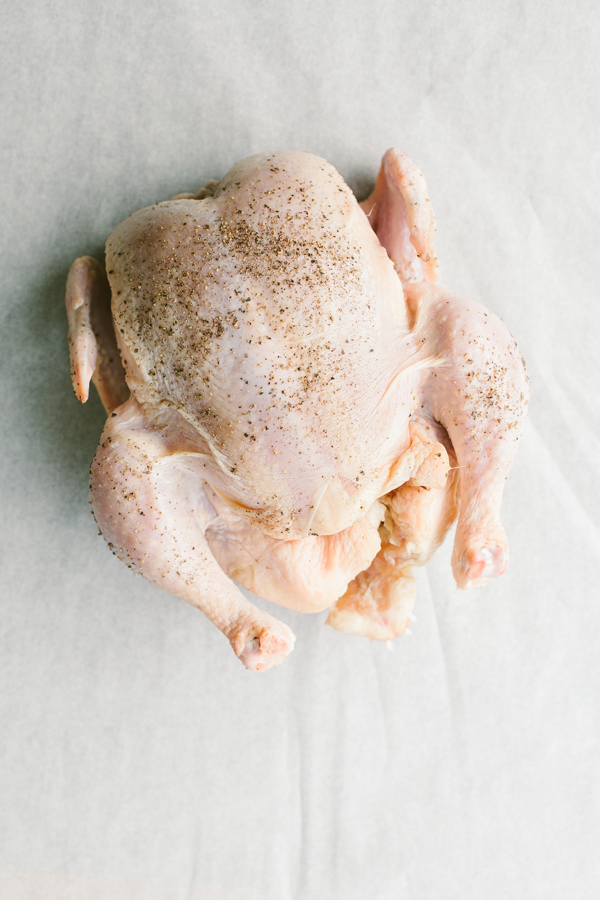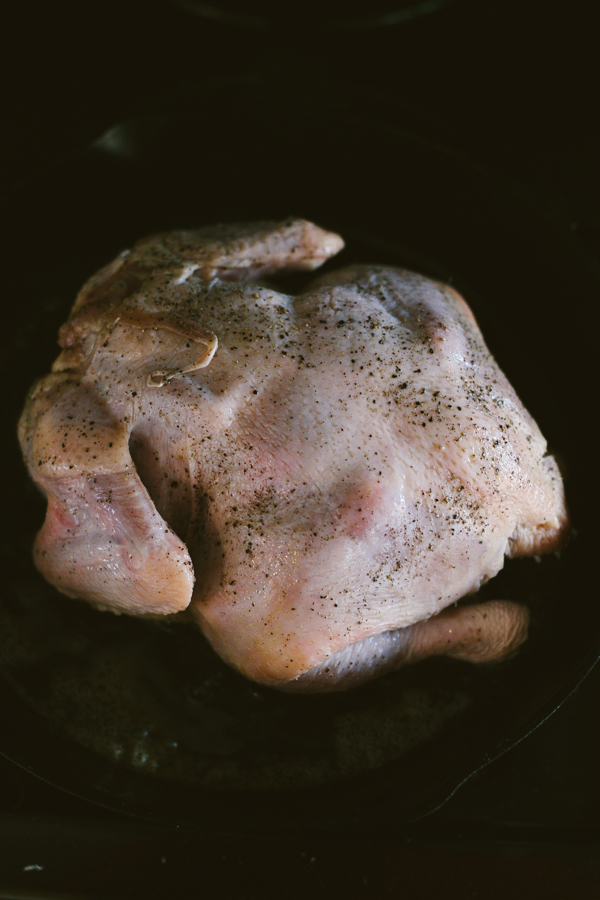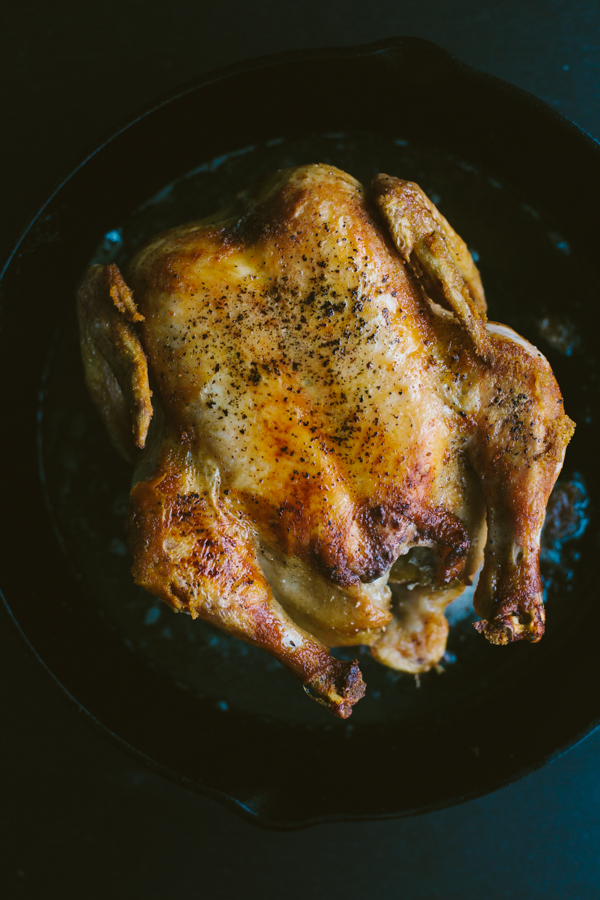You can certainly get creative when cooking chicken. You could marinate it, spatchcock it, grill it, smoke it, fry it, braise it or perhaps even sous vide it, but in my opinion, there is nothing better than a perfectly roasted chicken adorned with nothing more than salt and pepper. A staple of Provencal cooking, roasted chicken fits in perfectly with a variety of dishes. If roasted properly, the skin wrinkles and crisps, the meat stays soft, well-seasoned and juicy. The delicate flavor of the bird prevails.

So, how does one properly prepare a classic roast a chicken?
First, let’s start with a bird: Choosing a chicken
It should be small. Stick with a bird that is around 2 ½ – 3 ½ pounds. Jumbo roasters are often packed with synthetic hormones, taste bland and are too lean, which makes it hard for them to tolerate the hot oven needed to crisp the skin. According to Judy Rodgers, who in my mind was the authority on perfectly roasted chicken, “Small chickens flourish at high heat, roasting quickly and evenly, with lots of skin per ounce of meat, they are virtually designed to stay succulent.”
If possible, choose organic and/or local. They can be pricey but usually we can get a meal or two out of a roast chicken and then I’ll use the carcass for chicken stock to extend into another meal. So I don’t mind paying a bit more for a chicken with more flavor and less additives.
Pre-seasoning
I’m really excited to let you in on this secret and perhaps you already know, but for those that don’t what you are about to read will (or should) forever alter how you prepare chicken and most meat in general: salt at least 24 hours in advance. I guess I should say, salt AND pepper because that’s what I do in the case of the chicken.
We were once taught that salt should be applied just before cooking meat as it draws water out, leaving the meat dry and tough, BUT when you salt well in advance, some water is drawn out and then reabsorbed. The salt not only flavors the skin but makes its way deeper into the flesh seasoning throughout. Each bite is perfectly seasoned — not tasting salty but rather more of chicken. Salting 1 to 3 days in advance actually makes the meat more moist and tender. I do this for virtually all meat, with the exception of tender fish.
Place the chicken on a tray or large bowl and let it sit uncovered in the bottom of the fridge away from foods that will be consumed raw. Left uncovered, the skin dries out and gets even more delightfully crisp in the oven.

To truss or not to truss
I don’t bother tying the chicken into some sort of position fit for a contortionist. I like the hot oven to reach as much of the skin as possible.
Roasting
Preheat the oven to 450°F for at least 30 minutes prior to roasting. The hot oven is what makes the skin blister and turn deep golden.
Take the chicken out of the fridge an hour before roasting so it has a chance to come to take the chill off, which will allow the meat to cook more evenly.
Over high-heat add a bit of olive oil and butter to a 12-inch cast iron skillet (you can also use a small roasting pan or skillet). When the skillet is smoking, carefully add the chicken, breast side down. Sear the chicken for 3 minutes and then carefully transfer the entire skillet into the preheated oven.
This is a method I developed out common sense and a bit of laziness, I admit. Searing first on the stove sets the skin and keeps the breast moist. I don’t bother basting, flipping, poking or prodding the chicken until it’s been in the oven for 45 minutes. At that point, I plunge a thermometer deep into the thigh and remove it from the oven when the temperature reaches 160°F. I then let the chicken rest in the pan for 20 minutes before I serve or cut into it. During the resting time, the meat will continue to cook and come up to the safe 165°F. It will also allow the meat to relax and the juices to distribute.
My favorite part of this process, besides eating dinner, is flipping over the chicken after its roasted to reveal a dark, crusty chicken speckled with pepper and covered in a salty, crunchy skin. Always serve the chicken breast side up.

The aftermath
Once our chicken has been devoured and only bones and a few bits of meat remain, I make stock. There is still great flavor locked deep within the bones and the health benefits of making your own stock far outweigh the work of boiling a pot of vegetables and chicken carcass for a few hours.
If you like roast chicken, you’ll love poulet rôti — the famous French version. Learn how to make it in French Home Cooking: The Essential Technique, taught by prolific cookbook author and editor Cynthia Nims.

Share tips, start a discussion or ask one of our experts or other students a question.
No Responses to “Savory Saturday: How to Make a Classic Roast Chicken”